I’m here to discuss a vital but often overlooked aspect of our beloved horses: their withers. Understanding horse withers’ anatomy and movement is essential for proper care and prevention of potential issues.
In this guide, we’ll cover:
- The importance of withers in anatomy and movement
- Their role in horse care, including saddle fit, nutrition, and exercise
- How poor conformation can lead to higher risks of injury and lameness
- Common problems associated with horse withers.
We’ll dive into the importance of wither health, common problems horses face, and the preventive measures you can take to ensure your horse’s comfort and well-being.
Table of Contents
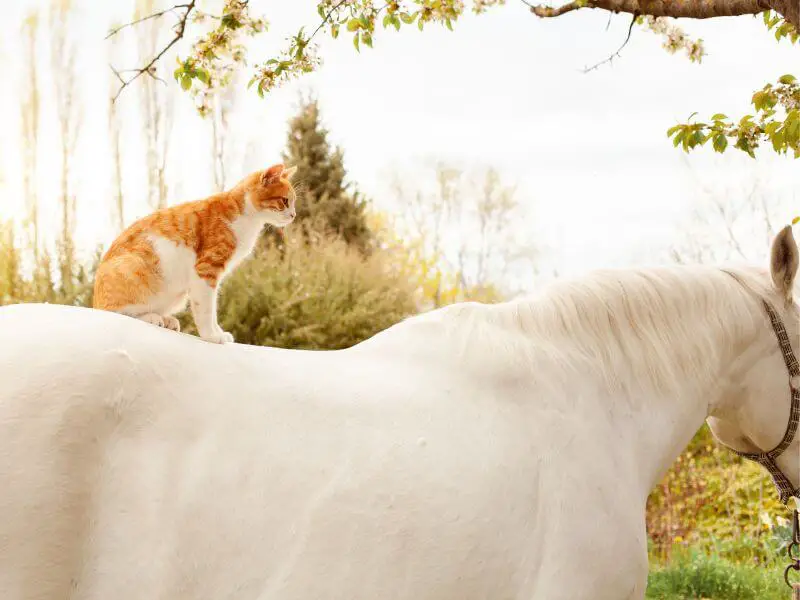
Anatomy And Function Of Horse Withers
Understanding the withers is crucial for your horse’s well-being. The withers are the highest point on a horse’s back, located between the shoulder blades, and serve as a key anchor point for various connective tissues and elastic ligaments.
The withers are composed of the dorsal spinal processes of the third to the eleventh thoracic vertebrae. These vertebrae, along with the surrounding muscles and ligaments, help support the horse’s weight and provide stability during movement. The skeletal structure of the withers plays a vital role in a horse’s overall balance and stability, and influences the length and motion of the stride.
When a horse moves, the withers act as a fulcrum, distributing weight evenly across the front and back of the horse.
This balance is essential for smooth, fluid movement and helps prevent injuries or strain on the horse’s back and legs.
The withers also connect the horse’s neck, shoulder, and back muscles, providing additional support and flexibility. As the horse moves, the muscles and ligaments on each side of the withers work in tandem, allowing for smooth, coordinated movements.
The health of the horse’s withers is dependent on a few factors, including:
- Proper saddle fit: Ensuring that the saddle fits correctly is crucial in preventing wither-related issues, such as pressure sores or muscle strain.
- Balanced riding: A balanced rider will help maintain the horse’s natural movement and prevent undue stress on the withers.
- Nutrition and exercise: A well-rounded diet and regular exercise can help support the horse’s overall musculoskeletal health, including the withers.
How Your Horse’s Withers Impact Performance
It is important to understand the relationship between your horse’s withers and shoulder movement, as this will impact your horse’s level of performance.
The Role of Withers in Your Horse’s Movement
First, let’s dive into the basics of withers and their connection to your horse’s shoulder and neck muscles. You see, horses don’t have a clavicle bone like we humans do. Instead, the withers provide stability for shoulder movement, allowing your horse to have a more efficient gait. The dorsal spinal processes of the withers are connected to those muscles, playing a vital role in your horse’s movement.
Now, you might be wondering how this affects your horse’s performance.
Well, horses with longer vertebrae in their withers tend to have:
- Greater stride length
- Increased speed
- Enhanced jumping ability
These factors all contribute to better performance overall.
How Withers and Shoulders Work Together for Better Movement and Balance
The way the withers and shoulders are put together influences the length and motion of your horse’s stride, making it an important factor in their movement and balance. The withers create an anchor point for most connective tissue and elastic ligaments that connect the forelimbs and back muscles. This plays a pivotal role in the biomechanics of your horse’s free-flowing movements.
Additionally, the withers serve as a central point between the neck and back, acting as a lever point. This means that when the horse lowers its head and neck, the back elevates, creating a collected movement.
Potential Problems with Withers
Unfortunately, not all is perfect in the world of withers. If the spinous processes of the withers are asymmetrical, they might prevent the horse from moving properly. In such cases, they will display compensatory movements consistent with lameness.
This highlights the impact that the shape and position of the withers can have on a horse’s shoulder movement and overall movement quality.
So remember the withers play a key role in your horse’s biomechanics, and any irregularities can negatively affect their movement and balance. So, keep an eye on your horse’s withers and seek expert advice if you suspect any issues – it can make all the difference!
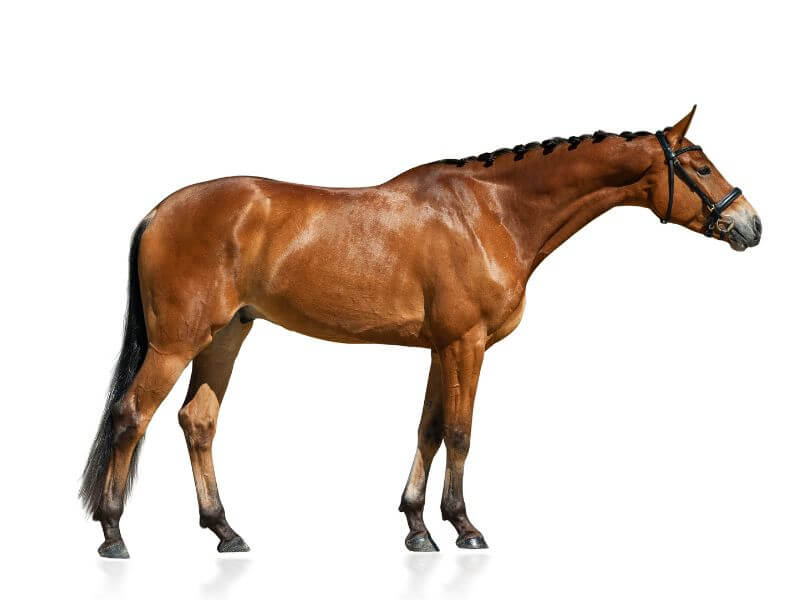
Measuring Horse Height: Quick Overview
The withers, the highest point on a horse’s back located just below the base of the mane, serves as the standard measurement point.
In the equestrian world, we use a unique unit of measurement called “hands” to express a horse’s height. One hand is equal to 4 inches or approximately 10.2 centimeters.
For a more in-depth guide on measuring horse height, stay tuned for our upcoming blog post dedicated to this topic. In the meantime, keep in mind the significance of your horse’s withers height when considering potential problems and solutions related to wither health.
Wither Conformation And Saddle Fitting
As a horse owner or rider, it’s crucial to understand the importance of wither conformation in evaluating the overall conformation of your horse.
The withers play a significant role in determining how comfortable and efficient your horse is when being ridden and in selecting the right saddle and tack.
Let’s dive into the details of wither conformation and its impact on your horse’s comfort and performance.
Ideal Withers Characteristics
The ideal withers should be well-defined and of medium height. This allows for proper saddle fit, providing the horse with better comfort and freedom of movement. Well-defined withers also contribute to improved stability, balance, and overall performance.
Various Conformations of Horse Withers
There are three main types of withers:
- Normal withers: well-defined and medium in height.
- High withers (shark fin withers): prominent and looks like a hump or a fin, hence the nickname shark fin.
- Low withers (mutton-withered): less prominent, and sometimes may look non-existent.
By knowing your horse’s wither type, you can choose appropriate tack and blankets to help prevent discomfort, rubbing, and back problems.
Horse’s Neck, Back, and Shoulder Conformation
The conformation of a horse’s neck, back, and shoulder is also essential, as these areas work together with the withers to support the rider and allow for efficient movement.
Proper conformation in these areas contributes to a balanced, comfortable, and high-performing horse.
Wither Conformation and Saddle Fit
The wither conformation directly impacts saddle fit. A well-fitted saddle ensures the horse’s comfort and enhances performance.
When selecting a saddle, it’s crucial to consider the wither conformation to prevent pressure points, rubbing, and other potential issues.
Saddle Challenges with High And Low Withers
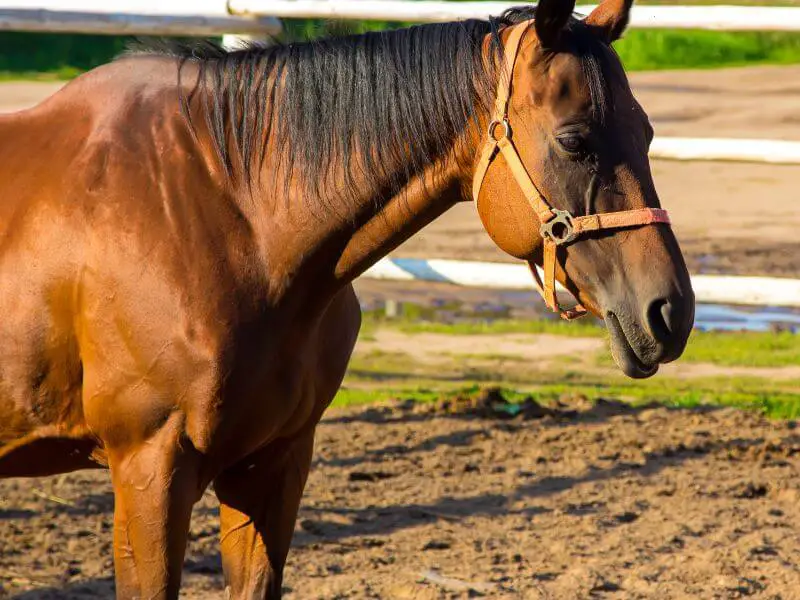
High Withers saddle Challenge
High withers can cause difficulties in finding a saddle that fits properly, as there is a higher risk of the saddle putting pressure on the withers, causing discomfort and potential injury.
To manage a horse with high withers, consider the following tips:
- Look for saddles specifically designed for high-withered horses, which offer additional clearance and support.
- Use a wither relief pad or a cut-back saddle pad to alleviate pressure on the withers.
- Ensure the gullet width and angle of the saddle match your horse’s wither shape and size.
- Regularly check the fit of the saddle, as your horse’s body shape may change over time.
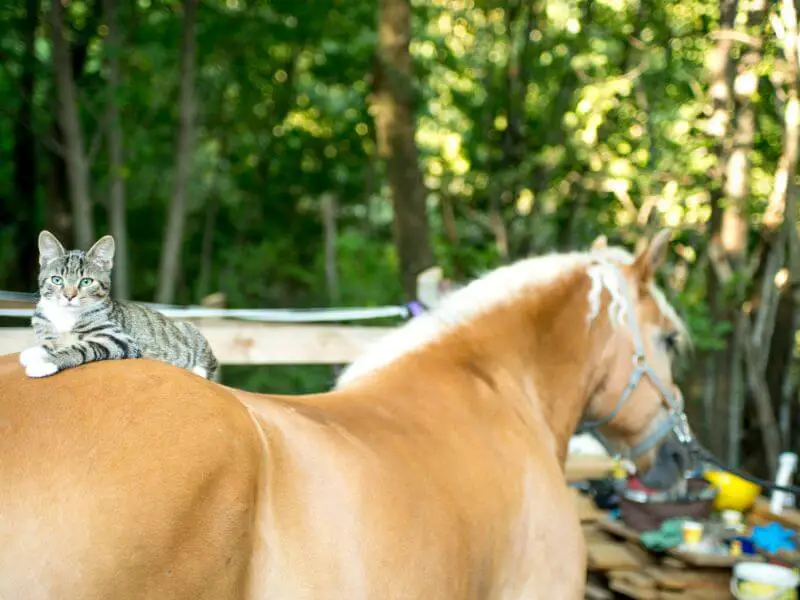
Low Withers Challenge
Low withers, also known as mutton-withered, may cause the saddle to slip or become unbalanced, which can also be uncomfortable for the horse and make riding more challenging.
To manage a horse with low withers, try these tips:
- Opt for saddles with a wider tree and a more rounded shape to better accommodate the flatter wither area.
- Use a non-slip saddle pad or a pad with additional padding in the wither area to improve saddle stability and prevent slippage.
- Consider a breastplate or a crupper to help secure the saddle and maintain its position.
- Monitor the fit of the saddle frequently and make adjustments as needed to maintain a balanced and comfortable fit for your horse.
Measuring and Fitting the Saddle to Your Horse’s Withers
Proper saddle fit is crucial to ensure healthy withers and unrestricted movement. An ill-fitting saddle can cause pressure points and sores on the withers, leading to performance issues and discomfort for the horse.
*Saddles should not sit directly against the top edge of the withers, and the panels should start two fingers below the top of the withers bone. *It is also important to check the saddle periodically, as saddle panels may compact differently over time.
Measuring Withers for Saddle Fit
When fitting a saddle, it is important to measure the withers properly. The withers are the highest point on a horse’s back, just behind its neck, and the most prominent bony feature of the horse’s body.
The shape of the withers, along with the horse’s conformation, determines how the saddle fits.
The required withers measurement varies depending on the type of saddle:
- Dressage saddles: at least 8-10 inches
- Jump saddles: at least 9-11 inches
- Western saddles: at least 10-12 inches
It is also important to measure the width of the withers to ensure that the saddle will fit properly.
Wither Tracing for Saddle Fitting
A wither tracing of the horse’s wither and back area can also help with saddle fitting. The tracing can be used to find a good fit in any style of saddle and can also help identify changes in the horse’s muscle or fat that may require adjustments to the saddle’s fit.
Wither Conformation and Saddle Fit
Wither conformation can also affect saddle fit. Horses with lots of muscle up front or a concave wither pocket area may require more rock in the saddle bars, while horses that are flat between the two may need less rock in their bars. The amount of crown in the bar is also important:
- More concave wither pockets require more crown to give relief to the bar edges, which are more likely to dig in on concave areas.
- Flatter wither pockets require less crown but still need relief on the edges to prevent digging in.
When fitting a saddle, it is important to check the fit regularly and make adjustments as needed to ensure your horse’s comfort and performance.
Identifying Healthy Withers
A horse with healthy withers should have well-defined and well-muscled withers that blend smoothly into its neck and back.
The withers should be set well behind the point of the shoulder, creating a smooth and unbroken top line for the horse’s neck and back.
To check for any issues, look for signs of soreness, swelling, or heat around the withers. A relaxed horse that doesn’t show signs of a cold back, bucking, twitching its tail, or aggressively trying to bite is likely to have healthy withers.
Remember, if you’re ever in doubt about your horse’s withers or you suspect a problem, it’s always best to consult with a veterinarian. They can help locate the issue and provide guidance on how to address it, ensuring your horse remains comfortable and performs at its best.
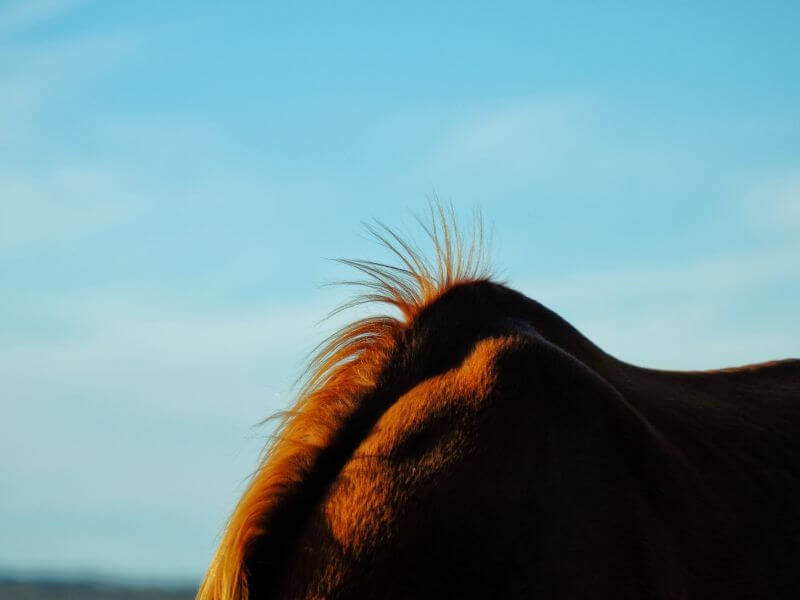
Diagnosing and Treating Horse Wither Problems
As a horse owner, it’s essential to know the symptoms and causes of wither problems. Once you’ve identified the issue, it’s time to take the necessary steps to diagnose and treat the problem.
Common Symptoms of Wither Problems
It’s crucial to be aware of potential wither problems to ensure your horse stays comfortable and healthy. Some common symptoms you might encounter include:
- Wither soreness – If you notice your horse is sensitive or reacts when you touch their withers, this could be an indication of soreness.
- Wither swelling – Swelling around the withers may signal inflammation or injury, requiring further investigation.
- Discomfort with saddle: If your horse is uncomfortable when wearing their saddle or shows signs of pain, it could be due to pinching from ill-fitting tack.
- Wither bruising – Bruises on the withers may indicate an injury or excessive pressure from the saddle.
- Aggression when saddling – If your horse becomes aggressive or resists being saddled, it may be experiencing wither pain.
- Hollowing of the back – A horse that hollows its back when ridden could be trying to avoid wither pain or discomfort.
- Shortened strides – If your horse takes shorter strides than usual, it may be due to wither-related pain or discomfort.
- Difficulty engaging – A horse that struggles to engage its hindquarters and use its full range of motion may be experiencing wither issues.
Should you notice any of these symptoms, it’s essential to investigate further and consult with a professional if needed. Early detection and proper care can help prevent long-term issues and keep your horse in tip-top shape.
Common Causes of Wither Problems
Understanding the causes of wither problems in horses can help you take proactive steps to prevent issues and address them promptly if they arise. Some of the most common causes include:
- A. Ill-fitting saddle – A saddle that doesn’t fit your horse properly can cause pressure points and discomfort, leading to wither problems. Ensure you have the right saddle size and shape for your horse’s specific withers and body type.
- Poorly positioned saddle – Even if the saddle fits well, if it’s not positioned correctly, it can still lead to wither issues. Make sure you know the proper way to place and secure the saddle on your horse.
- Fistulous withers and Brucella bacteria infection – This is a rare but serious infection that can cause painful abscesses in the wither area. If you suspect your horse has fistulous withers, consult a veterinarian immediately for diagnosis and treatment.
- Kissing spine – A condition where the spinal processes of the vertebrae come too close or touch each other, causing pain and discomfort.
- Repetitive motions – Horses that perform the same movements repeatedly, like jumping or dressage, may develop wither problems due to constant stress on the area.
- Underlying health conditions – Some health issues can cause inflammation and pain in the withers, such as arthritis or other joint problems.
- Traumatic wounds – Injuries to the wither area can occur from accidents, such as:
- Running under trees
- Horse bites.
- Injuries, such as rearing over backwards – A horse that rears over and falls backward can sustain severe wither injuries, including fractures.
- Pain from other parts of the body – Sometimes, pain from another area of the horse’s body can manifest as wither problems. For example, a horse with back pain may compensate by altering its movement, putting more strain on the withers.
- Training issues – If a horse has been poorly trained or has developed bad habits, it may exhibit behaviors that lead to wither problems, such as excessive head tossing or hollowing its back during riding.
Preventing and Addressing Wither Injuries
Proper care and attention to your horse’s withers can help prevent injuries and discomfort. Here are some tips to keep your horse’s withers healthy:
- Ensure proper saddle fit and perform periodic saddle checks: Ill-fitting tack and equipment are the most common causes of sore withers. Make sure your saddle fits correctly to avoid causing unhealthy withers, performance issues, and restricting the horse’s movement.
- Choose a well-fitting blanket for your horse: This will help prevent pressure points and rubbing.
- Position the saddle correctly on your horse’s back: This is crucial for avoiding unnecessary stress on the withers.
- Inspect and clean saddle pads and blankets regularly: Check for holes or dry, hard patches that could cause abrasions on the withers.
- Recognize white hair as an indication of focal pressure: If you see this on your horse, address the issue promptly to prevent further damage.
- Prevent and treat open wounds on withers: Keep the area clean and consult with your vet if necessary. Chronic or complicated wounds may require surgical debridement.
- Consider traditional and alternative treatments: Massage or chiropractic care can help address wither issues and promote overall well-being.
In addition to these tips, provide your horse with regular exercise and proper nutrition to keep its muscles and ligaments healthy. If your horse has a suspected fracture or kissing spine, consult a veterinarian for a proper diagnosis and treatment plan.
Steps to Diagnose and Treat Wither Problems
If you suspect your horse may have a wither problem, follow these steps:
- Consult with a veterinarian: Have your horse examined by a professional for a proper assessment and diagnosis. They may use x-rays and ultrasounds to determine the issue.
- Discuss possible treatment options: Your vet may prescribe medication, rest, or physical therapy to treat the soreness. Additionally, consider making adjustments to your horse’s tack or exploring alternative therapies.
- Ensure proper saddle fit and balance: Ill-fitting tack and equipment are common causes of sore withers. Make sure the saddle fits properly to avoid causing unhealthy withers, performance issues, and restricting the horse’s movement.
- Promote a healthy lifestyle: Proper nutrition and exercise are crucial for the overall health of your horse’s withers. Balanced riding can also help prevent wither problems.
By following these steps and keeping your horse’s well-being in mind, you can address any wither problems and ensure a happy, healthy life for your equine companion.
Recovery and Aftercare for Horse Wither Problems
When treating your horse for wither problems, it’s crucial to monitor their progress and provide the necessary aftercare. Here are some key aspects to consider during the recovery process:
Monitoring Your Horse’s Progress
Recovery times will vary depending on the severity of the issue and the treatment method. Always consult with your veterinarian for guidance on recovery times and any necessary follow-up appointments.
Keep the following in mind:
- Keep a close eye on your horse’s progress during their recovery
- If you notice any signs that the problem is not improving or worsening, contact your veterinarian to discuss adjustments to the treatment plan
- Remember, your horse’s well-being is the top priority, so don’t hesitate to reach out for professional advice when needed
Treatment Options and Prognosis
If your horse has a sore wither, it should be examined by a veterinarian to get a proper diagnosis and treatment plan. The veterinarian may prescribe medication, rest, or physical therapy to treat the soreness. Here are some tips for managing the recovery process:
- The area should be left open to dry and heal
- The horse should be given rest from its work schedule
- Tack should be kept off until the horse has recovered
- A cold compress will help reduce swelling if the withers are swollen
- If the horse has a wound or sore on the withers, it should be cleaned and treated promptly to prevent infection
Some chronic or more complicated wounds of the withers may require surgical debridement.
The long-term prognosis for wither injuries is generally good, with nearly all horses regaining their full athletic ability after six months.
By following these guidelines and maintaining open communication with your veterinarian, you can ensure a successful recovery and a healthy future for your horse.
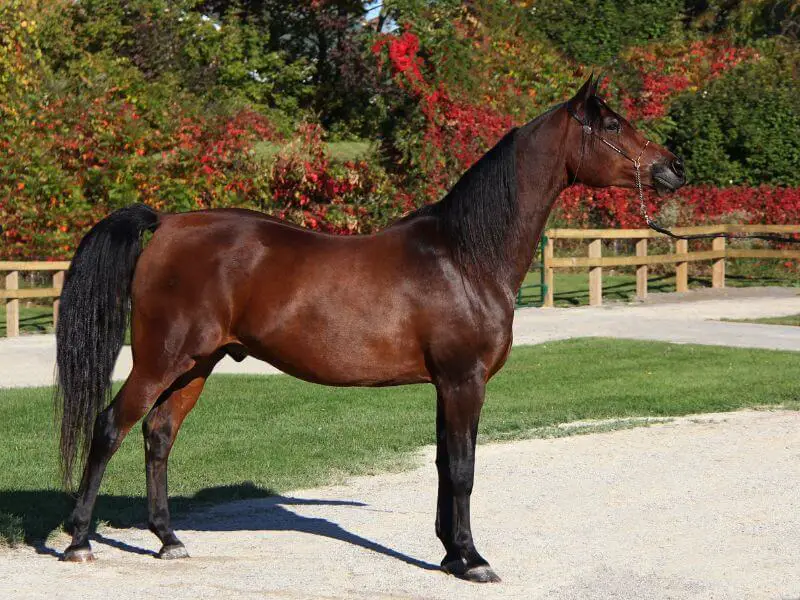
Common Myths About Horse Withers
Myth 1: Horse withers don’t change shape
Contrary to popular belief, a horse’s withers can indeed change shape over time. Factors such as age, fitness level, and weight can affect the shape and size of a horse’s withers. It’s essential to monitor your horse’s withers regularly and adjust the saddle fit as needed to ensure their comfort and well-being.
Myth 2: Horses don’t feel pain in their withers
Horses can absolutely feel pain in their withers, and this area can be quite sensitive. If a horse is experiencing wither pain, it may exhibit signs such as:
- Aggression when saddling
- Hollowing of the back
- Shortened strides
- Difficulty engaging
Proper care and attention to saddle fit and equipment can help prevent and alleviate wither pain.
Myth 3: Wither problems only affect certain breeds
Wither problems can affect any horse, regardless of breed. While some breeds may have a predisposition to certain wither conformations, it’s crucial to assess each horse individually and provide appropriate care and equipment to maintain their wither health.
Myth 4: All saddles fit all wither types
Every horse is unique, and it’s unrealistic to expect one saddle to fit all wither types perfectly. Proper saddle fit is essential to prevent pain and injury, and this means finding a saddle that’s suitable for your horse’s specific wither conformation. It’s advisable to work with a professional saddle fitter or consult your veterinarian to ensure a proper fit.
Myth 5: A well-fitting saddle will never cause wither problems
Even a well-fitting saddle can cause wither problems if it’s not properly maintained or if the horse’s withers change shape over time. Regular saddle and tack maintenance, periodic saddle checks, and proper use of saddle pads and blankets can help prevent wither issues.
Always monitor your horse for any signs of discomfort or pain and consult a professional if problems arise.
Myth 6: High-withered horses are at a disadvantage
High withers can actually increase stride length, giving horses greater ability for jumping and racing. This proves that high-withered horses aren’t at a disadvantage when it comes to their ability to compete.
Myth 7: Broken withers will sideline a horse for good
While broken withers can be painful and require rest and treatment, they seldom sideline a horse for good. With appropriate care, most horses can recover and continue their normal activities.
Myth 8: The withers are not an important part of a horse’s anatomy
The withers are an essential part of the horse’s anatomy, providing support and stability for the animal during movement. They are also the main point of contact for the saddle and bridle, making proper saddle fit and balanced riding essential for the health of the horse’s withers.
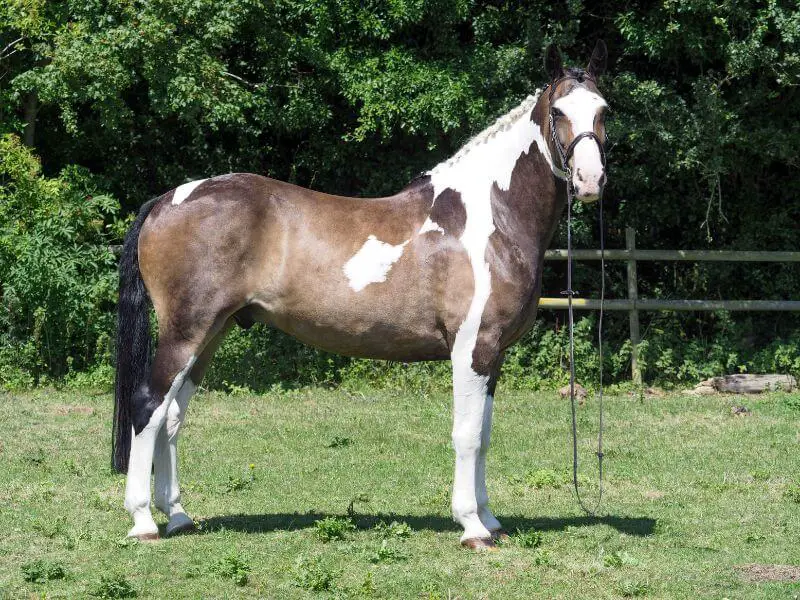
Conclusion
Throughout this guide, we’ve discussed the importance of understanding the anatomy and function of horse withers, how to measure horse height, evaluate wither conformation, and select appropriate tack. We’ve also touched on the symptoms and causes of wither problems and how to diagnose, treat, and prevent them.
As a horse owner or rider, it’s crucial to address any wither problems promptly to ensure the comfort, performance, and overall well-being of your horse. Ignoring wither issues can lead to long-term health problems and a decline in your horse’s performance.
Prevention is always better than cure. By taking proper care of your horse’s withers through regular checks, proper saddle fit, and appropriate tack selection, you can avoid many common wither problems. Ensure that you’re familiar with the signs and symptoms of wither issues and address them as soon as they arise.
Our goal in creating this comprehensive guide is to help you better understand horse withers and related issues. With this newfound knowledge, you’ll be better equipped to care for your horse, preventing and addressing wither problems to ensure a happy, healthy, and comfortable equine companion.
| Key Takeaways |
|---|
| Horse withers play a vital role in support, stability, and balancing actions of muscles and ligaments. They are located between the third and eleventh thoracic vertebrae. |
| Withers serve as a standard measurement point for a horse’s height, using hands as the unit of measurement (1 hand = 4 inches or 10.2 cm). |
| Ideal wither characteristics are well-defined and medium in height. Various conformations of withers can impact saddle fit, horse performance, and overall conformation. |
| Different types of withers require appropriate tack to prevent back problems and enhance a horse’s comfort. Horse withers impact the horse’s movement and shoulder function. |
| Common symptoms include wither soreness, swelling, pinching, bruising, aggression when saddling, hollowing of the back, shortened strides, and difficulty engaging. |
| Causes can include ill-fitting saddles, poorly positioned saddles, infections, repetitive motions, underlying health conditions, traumatic wounds, injuries, and training/behavioral issues. |
| Diagnosing wither problems involves identifying symptoms and consulting with a veterinarian. Treatment includes addressing injuries, maintaining proper saddle fit, and monitoring recovery progress. |
| Understanding the three types of withers (normal, high, and low) helps determine the appropriate tack for each horse. Proper tack and equipment fit is essential for a horse’s comfort, performance, and longevity. |
| Professionals such as veterinarians or equine chiropractors should be consulted when wither pain is persistent, unexplained behavioral changes occur, or when attempts at addressing wither problems through tack adjustments are unsuccessful. |
| Myths debunked include: withers don’t change shape, horses don’t feel pain in their withers, wither problems only affect certain breeds, all saddles fit all wither types, and a well-fitting saddle will never cause wither problems. |
Armed with this complete guide to horse withers and problems, you’ll be better equipped to recognize and address any issues your horse may have.
Cheers, Kacey
P.S. Did you like this article? Gallop over to:

